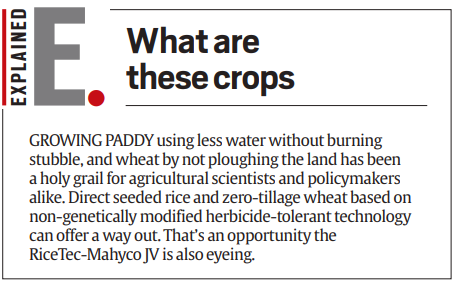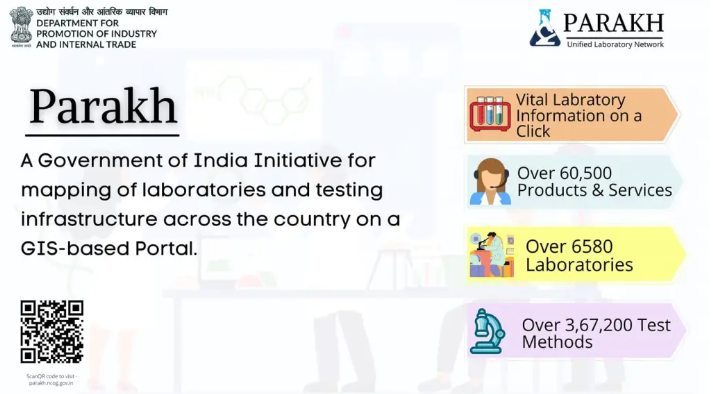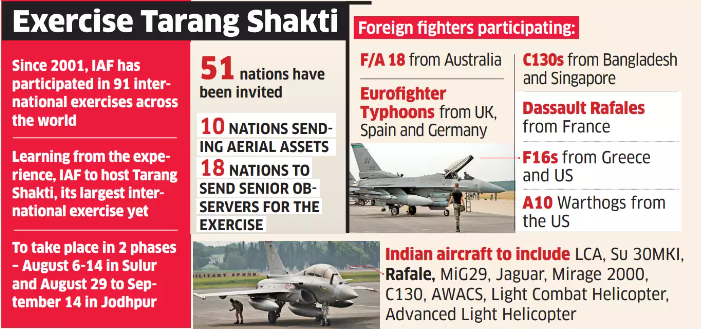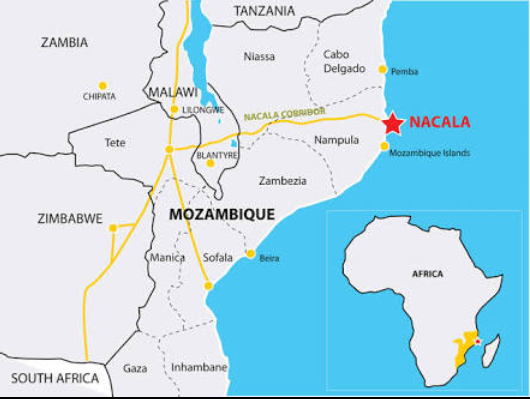1 August 2024 : Daily Current Affairs
1. Privilege breach proceedings against MLAs can continue in next Assembly: Madras HC
- 1. Privilege breach proceedings against MLAs can continue in next Assembly: Madras HC
- 2. Judiciary can direct govt. to conduct a performance audit of its laws, says SC
- 3. INDEX OF EIGHT CORE INDUSTRIES (BASE: 2011-12=100) FOR JUNE, 2024
- 4. STEPS TO INTEGRATE TECHNOLOGY INTO THE NEW EDUCATION SYSTEM
- 5. Private Sector Innovation: Paryan Alliance Aims to Revolutionize India’s Rice-Wheat Cultivation with Climate-Smart Technologies
- 6. PARAKH Recommends Standardized Academic Standards for India’s 69 School Boards to Ensure Uniform Quality
- Prelims Facts
- 1. IAF’s largest multilateral exercise to begin this month
- 2. Mineral import surges 80%
- 3. Tanzania evicting tens of thousands of Maasai: HRW
- 5. Tur/Pigeon Pea Shipments from Mozambique Resume After Diplomatic Intervention
- 6. Hamas Leader Ismail Haniyeh Assassinated in Tehran Airstrike; Iran and Hamas Blame Israel
- 7. Australia Launches World-First Program to Treat Infant Peanut Allergies
(Source – The Hindu, International Edition – Page No. – 2)
| Topic: GS2 – Indian Polity – Judiciary |
| Context |
|
Analysis of the news:
Continuation of Proceedings Post Assembly Dissolution
- The Madras High Court ruled that breach of privilege proceedings against Members of the Legislative Assembly (MLAs) can continue even after the dissolution of the Assembly to which they were elected.
- Such incomplete proceedings are not considered to have lapsed with the election of a new Assembly.
Purpose of Privileges
- The court emphasised that privileges granted to the House would be meaningless if proceedings lapsed with the tenure of a particular Assembly.
- It stated that MLAs might not take privileges seriously if the law were interpreted otherwise.
Context of the Case
- The ruling came while allowing writ appeals filed in 2021 by the then Legislative Assembly Secretary and the chairman of the Committee of Privileges.
- These appeals were against a single judge’s order in 2020, which quashed show-cause notices issued to Chief Minister M.K. Stalin and 17 other DMK MLAs for displaying ‘gutkha’ sachets in the Assembly in July 2017.
Division Bench Observations
- The Division Bench criticised the single judge for “assuming the role of the Speaker” and interfering at the preliminary stage by quashing the show-cause notices.
- The matter was remitted back to the current Speaker and the Committee of Privileges for further proceedings and a final decision on merits.
| Constitutional Provisions Related to Privileges of MPs and MLAs: |
|
Article 105:
Article 106:
Article 194:
Article 105(2) and Article 194(2):
Issues Associated with Privileges of Parliamentarians in India:
Way Forward:
|
| Practice Question: Explain the significance of legislative privileges for parliamentarians and discuss how they influence the functioning of legislative bodies. (150 Words /10 marks) |
2. Judiciary can direct govt. to conduct a performance audit of its laws, says SC
(Source – The Hindu, International Edition – Page No. – 4)
| Topic: GS2 – Indian Polity – Judiciary |
| Context |
|
Supreme Court Judgment on Performance Audits of Statutory Laws:
Judicial Power and Duty:
- The Supreme Court has affirmed the judiciary’s power and duty to direct the government to conduct a performance audit of statutory laws to evaluate their actual impact on beneficiaries.
- This move is intended to ensure that laws are effectively implemented and achieve their intended objectives.
Case Background:
- The judgement was delivered in the context of the Maharashtra Slum Areas (Improvement, Clearance and Redevelopment) Act, 1971, which has faced multiple litigations.
- The Court found the implementation of this law concerning and directed a review to identify problems and assess the law’s effectiveness.
Government Duty:
- The Court highlighted that the government has a constitutional obligation to ensure statutes are effectively implemented and monitored.
- It stressed that continuous, real-time assessments of laws’ impacts are essential to uphold the rule of law and address any inefficiencies.
Court’s Role:
- The Court noted that many statutory schemes get bogged down in bureaucratic delays, which hinder their objectives.
- In such scenarios, the judiciary can play a facilitative role to ensure justice and effective implementation of laws.
Institutional Memory and Judicial Precedents:
- Justice Narasimha emphasised the value of the Supreme Court’s institutional memory and judicial precedents in guiding performance audits.
- The judiciary’s unique position enables it to assess the practical working of statutes and direct necessary reviews.
Conclusion:
- The Supreme Court underscored that reviewing the performance of statutes is a critical component of ensuring that laws function as intended and serve their purpose in practice.
| Performance Audits of Statutory Laws: |
|
Performance Audits of Statutory Laws:
Significance:
|
| Practice Question: Discuss the Supreme Court’s recent judgement on the judiciary’s authority to direct performance audits of statutory laws. What are the implications of this judgement for the implementation and review of legislation, and how does it reflect on the role of the judiciary in ensuring effective governance? (250 Words /15 marks) |
3. INDEX OF EIGHT CORE INDUSTRIES (BASE: 2011-12=100) FOR JUNE, 2024
(Source – https://pib.gov.in/PressReleseDetail.aspx?PRID=2039668 )
| Topic: GS3 – IndianEconomy |
| Context |
|
Index of Industrial Production (IIP):
- The Index of Industrial Production (IIP) is a key economic indicator that measures the performance of various industrial sectors in a country.
- It reflects changes in the production levels of the industrial sector over a specific period, providing insights into the overall economic activity.
- IIP is calculated based on the volume of production in sectors manufacturing, mining, and electricity.
Eight core industries of IIP:
- Crude Oil: Weight: 8.98%
- Coal: Weight: 10.33%
- Natural Gas: Weight: 6.88%
- Petroleum Refinery Products: Weight: 28.04%
- Fertilisers: Weight: 2.63%
- Steel: Weight: 17.92%
- Cement: Weight: 5.37%
- Electricity: Weight: 19.85%
- The base year for the IIP is typically chosen to serve as a reference point for comparing production changes over time – the current base year for IIP is 2011-12
- The index helps in assessing the growth or contraction of industrial output, aiding policymakers and investors in making informed decisions.
- It plays a crucial role in economic planning, policy formulation, and monitoring of industrial performance.
- A higher IIP indicates industrial growth, while a lower IIP suggests a decline in production.
- The IIP is often used by the government, researchers, and analysts to analyse trends and formulate strategies for economic development.
| Practice Question: Discuss the significance of the Index of Eight Core Industries (ICI) in measuring industrial performance in India. (150 Words /10 marks) |
4. STEPS TO INTEGRATE TECHNOLOGY INTO THE NEW EDUCATION SYSTEM
(Source – https://pib.gov.in/PressReleseDetail.aspx?PRID=2039811 )
| Topic: GS2 – Governance |
| Context |
|
Steps taken by the government for integration of Technology in education system:
- National Education Policy 2020: Emphasises the integration of technology to enhance education and preserve linguistic diversity.
- Bhasha Sangam Programme: Run by NCERT to promote and preserve linguistic diversity through education.
- Machine Translation Cell: Translates books into scheduled languages to improve accessibility.
- Anuvadini App: Utilised by AICTE and UGC to translate undergraduate and postgraduate course materials, including technical books, into multiple Indian languages.
- e-KUMBH Portal: Hosts translated books for easy access.
- NEET, JEE, CUET: Conducted in 13 languages to accommodate diverse linguistic needs.
- Regional Language Engineering Education: Some AICTE-approved institutions offer engineering courses in 8 regional languages.
- DIKSHA Portal: Provides course materials and teaching resources in 33 Indian languages.
- ASMITA Initiative: Launched by UGC to promote Indian languages in education through translation and academic writing.
- Mission Digital India Bhashini (2022): Developed by MEITY to create open-source language technologies for 22 Scheduled Indian languages.
5. Private Sector Innovation: Paryan Alliance Aims to Revolutionize India’s Rice-Wheat Cultivation with Climate-Smart Technologies
(Source: Indian Express; Section: Govt & Politics; Page: 08)
| Topic: GS3 – Agriculture GS3 – Science and Technology |
| Context: |
|
Analysis of News:

Public Sector Monopoly to Private Sector Collaboration
- Traditionally, rice and wheat breeding research in India has been dominated by the public sector.
- Recently, RiceTec Inc., based in Texas, and Mahyco Pvt. Ltd., based in Maharashtra, have formed a joint venture (JV) named Paryan Alliance Pvt. Ltd. to enhance the climate resilience and sustainability of the rice-wheat cropping system.
Focus on Climate-Smart Technologies
- Paryan Alliance aims to promote direct seeding for rice (DSR) and zero tillage (ZT) for wheat, eliminating the need for traditional transplanting and field flooding for rice, and stubble burning and extensive ploughing for wheat.
- RiceTec’s ‘FullPage’ DSR solution and Mahyco’s ‘FreeHit’ ZT technology, developed with Geneshifters LLC, are central to these efforts.
Complementary Technologies for Major Crop Areas
- Paryan will implement these technologies across approximately 12 million hectares from Punjab to Bihar.
- RiceTec’s ‘FullPage’ includes DSR-compatible plant genetics and seed treatment solutions, while Mahyco’s ‘FreeHit’ focuses on ZT wheat cultivation, addressing the need to manage paddy stubble and weeds.
Reducing Resource Use and Emissions
- The JV aims to reduce water, labor, and fuel consumption and greenhouse gas emissions.
- Their rice and wheat hybrids, containing a mutated gene, allow the use of Imazethapyr herbicide to control weeds without harming the crops.
- This trait, introduced via mutation breeding, avoids the controversies associated with genetically modified organisms (GMOs).
Enhancing Cultivation Efficiency
- Traditional rice cultivation is labor and water-intensive, involving nursery preparation, transplanting, and frequent irrigation.
- DSR can save about 30% water by eliminating these steps.
- Similarly, ZT wheat cultivation bypasses stubble burning and ploughing, directly sowing seeds and applying herbicides as needed.
Regulatory and Market Expansion
- The RiceTec/Savannah rice hybrids have been successfully tested on thousands of acres in several states.
- Mahyco is awaiting regulatory approval for the ‘FreeHit’ ZT wheat technology.
- Paryan Alliance is open to licensing their herbicide-tolerant trait to other seed companies, potentially expanding the reach and impact of their innovations.
| What are the Benefits of the DSR Technique? |
|
Reduced Water Usage:
Lower Labour Requirements:
Earlier Maturity:
Improved Soil Health:
Reduced Greenhouse Gas Emissions:
Subsidised Electricity:
Weed Growth:
Lack of Awareness:
Cost:
|
| PYQ: What is/are the advantage/advantages of zero tillage in agriculture? (2020) 1) Sowing of wheat is possible without burning the residue of the previous crops. 2) Without the need for a nursery of rice saplings, direct planting of paddy seeds in the wet soil is possible. 3) Carbon sequestration in the soil is possible. Select the correct answer using the code given below: (a) 1 and 2 only (b) 2 and 3 only (c) 3 only (d) 1, 2 and 3 Ans: D |
| Practice Question: Discuss the advantages and challenges of implementing direct seeding and zero tillage technologies in the context of climate resilience and resource efficiency. How can these innovations contribute to India’s agricultural goals and address environmental concerns? (250 words/15 m) |
6. PARAKH Recommends Standardized Academic Standards for India’s 69 School Boards to Ensure Uniform Quality
(Source: Indian Express; Section: Explained; Page: 16)
| Topic: GS2 – Social justice – Education |
| Context: |
| The article discusses a report by PARAKH, a standard-setting body under NCERT, which recommends standardizing academic standards across India’s 69 school boards to ensure uniform educational quality. |
Analysis of News:

What is PARAKH?
- PARAKH has been launched as part of the implementation of the National Education Policy (NEP)-2020 that envisaged a standard-setting body to advise school boards regarding new assessment patterns and latest research, and promote collaborations between them.
- It will act as a constituent unit of the NCERT.
- It will also be tasked with holding periodic learning outcome tests like the National Achievement Survey (NAS) and State Achievement Surveys.
- It will work on three major assessment areas: large-scale assessments, school-based assessment, and examination reforms.
Equivalence Across School Boards in India
- Overview: The PARAKH body, under NCERT, submitted an ‘equivalence’ report to the Ministry of Education, recommending how to standardize academic standards across India’s 69 school boards, which include state boards, CBSE, ICSE, NIOS, open schools, and madrasa boards.
- Equivalence Meaning: Standardizing boards to ensure uniform academic quality across all boards, providing every student with similar educational opportunities and facilities.
Key Recommendations:
- Cumulative Assessment: Class 12 results to include marks from classes 9 (15%), 10 (20%), 11 (25%), and 12 (40%).
- Credits and Holistic Assessment: Use of a credit system for each subject, online courses, and holistic progress cards, incorporating self and teacher assessments.
- Professional Papersetters: Training teachers as professional papersetters for standardized question paper preparation.
- Standardized Question Papers: Creation of a question bank and blueprint for classes 9 to 12.
- Affiliation Guidelines: Boards to finalize school affiliation guidelines, conduct periodic reviews, and grant affiliations for a maximum of three years.
- Digital Literacy: Incorporation of digital literacy, including coding and cybersecurity, following the National Curriculum Framework.
- Preparation of Report: PARAKH assessed 32 boards, excluding Sanskrit, madrasa, and technical boards, using a questionnaire and two years’ worth of question papers. Conferences with board representatives discussed the findings and recommendations.
| PYQ: Education is not an injunction, it is an effective and pervasive tool for all-round development of an individual and social transformation”. Examine the New Education Policy, 2020 (NEP, 2020) in light of the above statement. (2020) |
| Practice Question: The National Education Policy (NEP) 2020 emphasizes the establishment of PARAKH as a standardized assessment framework for student learning outcomes. Discuss the role of PARAKH in transforming the Indian education system. How can it address the existing challenges in student assessment and what implications does it have for holistic education reform in India? (250 words/15 m) |
Prelims Facts
1. IAF’s largest multilateral exercise to begin this month
(Source – The Hindu, International Edition – Page No. – 6)
| Context |
|

Analysis of the news:
- The Indian Air Force (IAF) will host its largest multilateral exercise, Tarang Shakti, in August and September, divided into two phases.
- Phase-1 will take place from August 6-14 at Sulur, Tamil Nadu, and will feature participants from Germany, France, Spain, and the U.K.
- It will include 32 foreign aircraft and over 40 IAF aircraft. The Indian Navy will also contribute MiG-29K carrier-borne fighters.
- Phase-2 is scheduled for September 1-14 at Jodhpur and will involve Australia, Bangladesh, Greece, Singapore, the UAE, and the U.S.
- This phase will feature 27 fighter jets, 2 refuelling aircraft, 2 airborne early warning and control systems, and 4 C-130 Special Forces aircraft from foreign countries, along with over 40 IAF aircraft.
- The exercise aims to foster interoperability, share best practices, and showcase the indigenous defence industry.
2. Mineral import surges 80%
(Source – The Hindu, International Edition – Page No. – 13)
| Context |
|
Analysis of the news:
- India’s major mineral imports, mostly non-critical, surged nearly 80% in value terms over five years to ₹68,633 crore in FY24, although imports fell by 2% year-on-year from ₹70,125 crore.
- Imports in FY19 were ₹38,604 crore.
- Major minerals include copper ore concentrates, phosphorite, manganese ore, limestone, iron ore, bauxite, asbestos, sulphur, magnesite, and fluorspar, which together account for 97% of mineral imports.
- Volume of imports for these ten minerals increased by 9% over five years to 619.42 lakh tonnes.
- Copper ore concentrate imports were the highest at ₹25,951 crore, more than doubling from ₹12,146 crore in five years.
- Iron ore imports decreased, while manganese ore and bauxite shipments grew by 60-80% from FY19 to FY24.
- Limestone imports were the highest in volume at 338.09 lakh tonnes, followed by phosphorite at 55.98 lakh tonnes.
- Critical mineral imports (excluding lithium-ion and copper) for FY24 were ₹1,396.6 crore, totaling 82,260 tonnes.
3. Tanzania evicting tens of thousands of Maasai: HRW
(Source – The Hindu, International Edition – Page No. – 15)
| Context |
|
More about the Maasai Tribe:
- Community: The Maasai are a nomadic ethnic group native to Kenya and Tanzania, known for their traditional pastoral lifestyle and cultural practices.
- Ancestral Lands: The Maasai’s ancestral lands are in the Ngorongoro Conservation Area, a UNESCO World Heritage site in Tanzania.
- Government Relocation Plan: Tanzania’s government initiated a relocation program in 2022 to move about 82,000 Maasai from Ngorongoro to Handeni district, approximately 600 kilometres away.
- Purpose of Relocation: The government claims the move is to conserve the Ngorongoro site from human encroachment, while critics argue it is for conservation and tourism benefits.
- Human Rights Concerns: Human Rights Watch reports forced evictions, beatings by government rangers, and lack of fair consent for relocation.
- International Criticism: The World Bank and European Union have withdrawn funding due to growing concerns over the displacement and rights violations.
| Human Rights Watch |
|
5. Tur/Pigeon Pea Shipments from Mozambique Resume After Diplomatic Intervention
(Source: Indian Express; Section: Express Network; Page: 14)
| Context: |
|
Analysis of News:

- Disruption and Resumption: Shipments were disrupted by an “anti-India” group but resumed after intervention by the Ministry of Consumer Affairs, Ministry of External Affairs, and the Indian High Commissioner.
- Current Shipment Status: 1,400 containers (35,000 tons) have departed for India, with the remaining 400 containers expected to leave by mid-August.
- Dependence on Imports: Despite being a large producer, India relies on imports for pulses, especially from Mozambique, its main source for Tur/Pigeon peas.
- Import Statistics: In 2023-24, India imported 7.71 lakh tons of Tur/Pigeon peas, with 2.64 lakh tons from Mozambique. In 2022-23, 4.6 lakh tons were from Mozambique out of 8.94 lakh tons total imports.
- Challenges: Imports dropped due to “hurdles” in Mozambique, exacerbated by obstructions from an anti-India group demanding ransom for shipments.
- Government Intervention: Deepak Pareek highlighted these issues in a letter to Prime Minister Narendra Modi, stressing the need for governmental intervention.
- Memorandums of Understanding (MoUs): Mozambique and India have an MoU for 2 lakh tons of Tur/Pigeon peas supply until 2025-26. A similar MoU exists with Malawi for 0.50 lakh tons annually.
- Overall Pulse Imports: In 2023-24, India’s pulse imports reached a record 47.38 lakh tons, nearly double the 24.96 lakh tons in 2022-23.
6. Hamas Leader Ismail Haniyeh Assassinated in Tehran Airstrike; Iran and Hamas Blame Israel
(Source: Indian Express; Section: Explained; Page: 16)
| Context: |
| The article discusses the assassination of Hamas leader Ismail Haniyeh in Tehran, allegedly by an Israeli airstrike, leading to potential increased attacks against Israel by Iran and its allied groups within the ‘axis of resistance,’ including Hezbollah, Hamas, PIJ, and the Houthis. |

Analysis of News:
- Incident: Ismail Haniyeh, a Hamas leader, was assassinated in an airstrike in Tehran on Wednesday morning.
- Accusations: Although Israel has not claimed responsibility, Hamas and Iran blame Israel and promise “major repercussions.”
- Potential Repercussions: Experts predict Iran might increase attacks against Israel through its allies within the ‘axis of resistance.’
- Axis of Resistance: Formed post-1979 Iranian Revolution, includes Iranian-backed groups like Hezbollah, Hamas, Palestinian Islamic Jihad (PIJ), and the Houthis. This coalition opposes Israeli and U.S. influence in the region.
Group Details:
- Hezbollah: Shiite militant group in Lebanon, formed in the 1980s, largest and most powerful in the axis, often clashes with Israel.
- Hamas: Sunni militant group controlling Gaza since 2007, opposes Zionism, supported by Iran.
- PIJ: Sunni Islamist militant group aiming for an Islamic state in Palestine, second-largest militant group in Gaza and the West Bank.
- Houthis: Zaydi Shia militant group in Yemen, controls northern Yemen, has attacked ships in the Red Sea in response to Israeli actions in Gaza.
7. Australia Launches World-First Program to Treat Infant Peanut Allergies
(Source: Indian Express; Section: Explained; Page: 16)
| Context: |
| Australia is introducing a pioneering nationwide program to expose infants with peanut allergies to peanuts early, aiming to reduce allergy rates and improve treatment. |
Analysis of News:
- Initiative: Australia introduces a groundbreaking program to expose infants with peanut allergies to peanuts early.
- Program Details: Funded by the National Allergy Centre of Excellence (NACE) and the Australian Government, the program partners with 10 pediatric hospitals.
- Treatment Plan: Allergic children under 12 months will follow a daily dosing schedule of peanut powder for two years.
- Goals: The program aims to achieve remission, with follow-up allergy tests and routine clinical care for at least 12 months to assess effectiveness and long-term outcomes.
- Context: Rising peanut allergy cases in developed nations are a concern. The “hygiene hypothesis” suggests that less exposure to infections due to “clean living” increases allergy susceptibility.
- Potential Impact: Studies show early peanut exposure can reduce allergy risks. Success in this program could inform treatments for other allergies.



